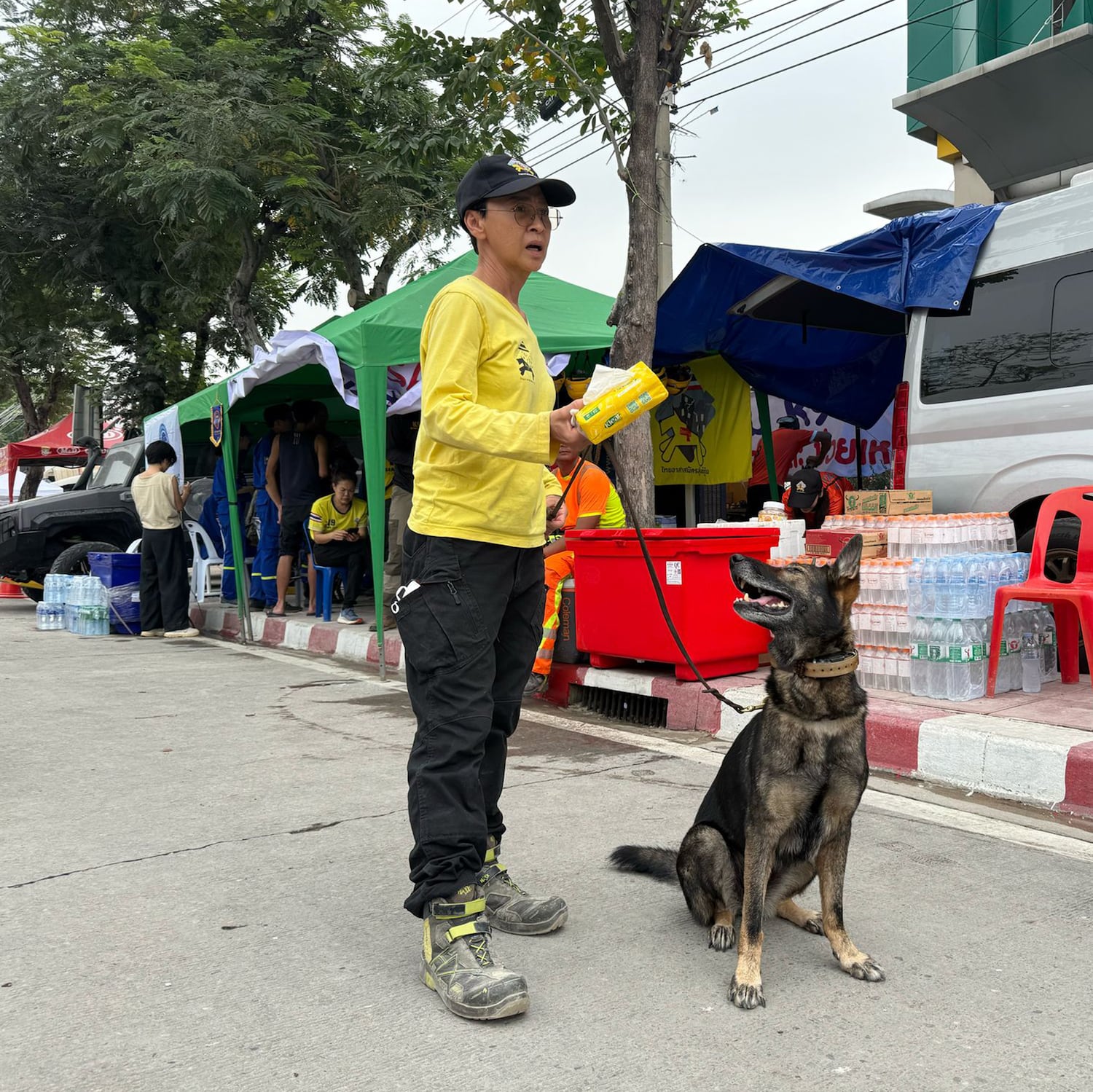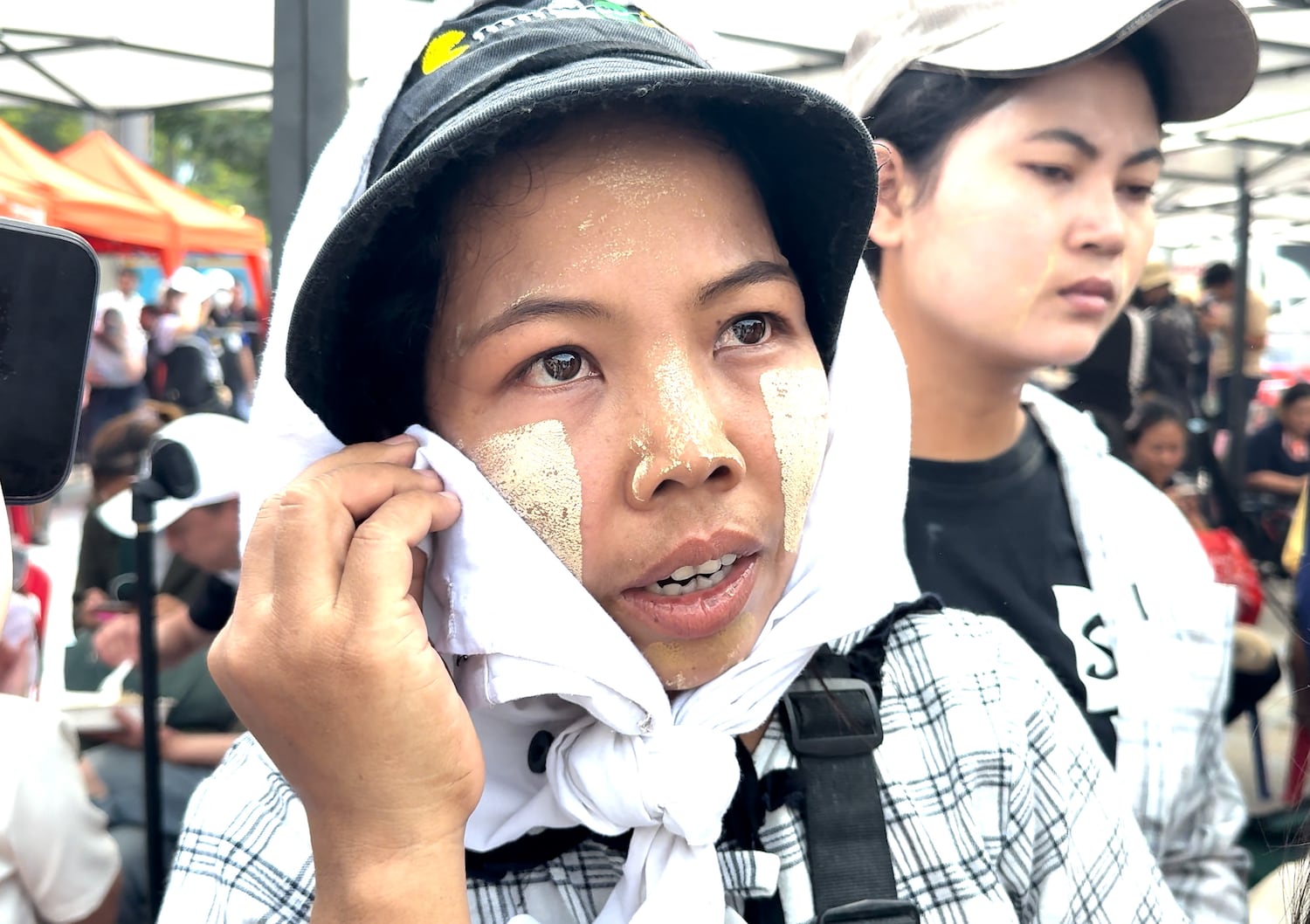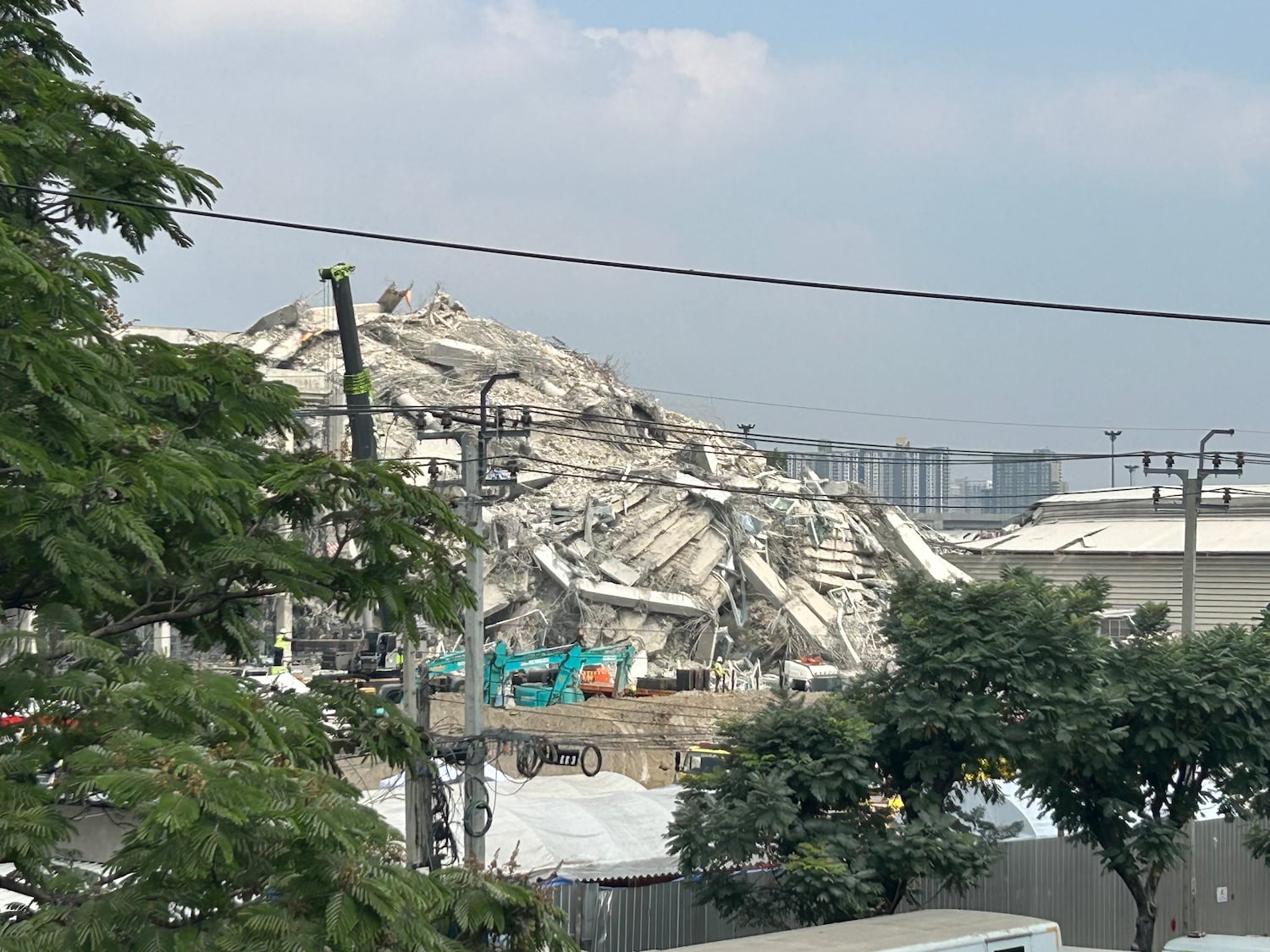On Friday 28 March at 5:40pm in Australia, I received a Telegram message from my mother, back home in Yangon, in our family chat. She said “Hi”, and I responded back, “hello”. The next message was, “Big strong earthquake happening”, and immediately after, a text from my sister, asking “Did u guys feel that. 7.7”. I tried to call, to no avail. Subsequent messages assured me of their physical safety, but internet signals were incredibly weak, and there was no update on when, or if, electricity would come back; they would reach out once it did.
In the immediate aftermath, a cursory Google search yielded little more than a live seismic feed—no definitive headlines, no posts, merely the stark fact of an earthquake. Soon, friends from Myanmar began to check up on me, and I did the same. Hours after the tremor, bits of news began to circulate on platforms like Instagram and X/Twitter, where journalists, writers, and the diaspora rapidly disseminated emerging details. It was through these channels that I learned Bangkok had suffered damage: buildings had shaken, a skyscraper under construction had collapsed, and videos of construction workers falling to their deaths were in circulation.
Clarity about the quake and its epicenter in Myanmar, however, remained elusive. Early photos indicated that Mandalay, Myanmar’s second-largest city, rich in cultural significance and home to many of my peers, had been hit hard.
I can’t really think of a word besides cruel to describe the feeling of being aware of an unfolding catastrophe, poised to impact thousands, while at a vast distance with only fragments of information at hand. It was only the following day that more precise details emerged: the quake had struck along the Sagaing Fault—a tectonic boundary stretching over 1,200km through the heart of Myanmar. The regions of Sagaing and Mandalay bore the brunt of the impact. Entire buildings, mosques, schools and monasteries were gone. The Ava Bridge collapsed. Mandalay Palace was severely damaged. The official death toll has surpassed 3,000, with thousands more injured, dying.
By the end of the night, the first signs of grassroots relief began filtering through online platforms. Spring Development Bank—a digital neo-bank with a parallel mission of mobilising aid—launched a fundraiser for emergency supplies and assistance. Friends from Mandalay circulated names and contact details of restaurants and intact buildings opening their doors for those in need: offering rest, clean water, and warm food.
Amid the growing solidarity online, footage began to surface of civilians digging out the rubble with their bare hands due to the lack of equipment. Where was the official response? By 30 March, an update shared on X by journalist Hnin Zaw indicated the scale of abandonment: no international aid had reached Sagaing, and only two civilian volunteer groups were operating in the region. Together, they had recovered over 150 bodies in just two days. The smell of the unrecovered dead had begun to saturate the air.
Amid the devastation, the Myanmar junta issued an appeal for international assistance. The responses, primarily from Russia and China, along with later contributions from Southeast Asian nations such as the Philippines, Thailand, and Indonesia, were conspicuously concentrated in Naypyidaw, the capital, and limited areas in Mandalay. The junta-controlled distribution has been criticised by local observers as being more concerned with photo ops than saving lives, reflecting the regime’s fixation with projecting an image of control and authority.
The junta’s concern with self-preservation was made even clearer when it refused a 126-member Taiwanese search-and-rescue team (a gesture of fealty to China’s geopolitical sensitivities). It has also imposed aid restrictions in Sagaing: organisations hoping to take part in relief efforts had to send the authorities a list of volunteers and items, and only after approval are they permitted to go in. Warnings have circulated urging civilian volunteers to cease rescue operations after the 10pm curfew imposed by the junta. A social media post by Mediacorps’ Naung K and other reports on X shared that the regime has not hesitated to forcibly conscript those actively engaged in relief efforts past this time. The junta also continued military operations in rural villages in Sagaing and other locations mere hours after the quake, ignoring a proposed military pause put forward by the National Unity Government.
One of the earliest videos to circulate from Mandalay was of a sobbing son holding the hand of his lifeless mother who was caught underneath the rubble. He recited the Buddhist Dhamma for her peaceful transition to a better life. He told her, “trust in me, May (mother), naw. I will be a good boy, naw”. This is an English translation, to the best of my ability, which does not do it justice. He repeats, “Naw, May, naw”.
“Naw” in the Burmese language is characterized as an umbrella term, a quirk, to convey a sentiment somewhere across the spectrum of endearment, assurance, agreement, and a shared understanding of responsibility and solidarity. Mostly used at the end of sentences, I have heard the term “naw” more times than any other Burmese word in my life. For example, “sar lote” means, “Do your studies”, but everybody says, “sar lote, naw”. It can mean many things, from “I am reassuring you”, “I am warning you”, “I am disciplining you”, “I agree with you”, “I am reiterating my point”, “this is truth”, and so on.
Related

The treatment of refugees in Indonesia sees a serious setback
Regardless of the context, it is always in conjunction with the sentiment, “I care about you”, or “You are meaningful to me”. But again, as I’m writing, I don’t think English fully captures it. Can you ever, really, translate “naw”, for all its variety and meaningfulness? The video was difficult to watch. My friends from Myanmar, who are studying here in Australia, had all sent each other variations of, “it’s so horrible, naw”, “take care naw”, “if you need anything, let me know, naw”, “We should do something, naw”.
Anthropologically, “naw” functions as a microcosm of Burmese sociality. It is a linguistic device that compresses layers of meaning into a single syllable, evoking both intimacy and/or social regulation. In traditional Burmese society, where collectivism and mutual care form the social bedrock, such a term is indispensable. This is reminiscent of what Clifford Geertz identified as the “webs of significance” that culture weaves; here, “naw” binds individual expression to communal synergy. A reminder of significance in any capacity. In the case of the video, it is repeated with finality and acceptance. “Naw” goes back to what it always means, “I care for you”. “I love you”.
Pleading, pain, and loss are visceral processes. For a few minutes, “naw” allowed me to feel the man’s pain. As someone currently far away, from the only home I have known, I cannot describe how awfully harrowing and numbing it is to watch my people die from a screen in the ANU’s Chifley Library.
I cannot describe how awfully harrowing and numbing it is to know that the military junta has carried out airstrike after airstrike after the quake (and reportedly flouted its own, belated, temporary ceasefire announced shortly before regime leader Min Aung Hlaing travelled to Bangkok for a regional meeting). I cannot describe how awfully harrowing and numbing it is to go on social media, watch someone’s story describing the quake’s casualty rates, and be hit with a photo of a beach right after.
I cannot describe how harrowing and numbing it is to try and break down all of Myanmar’s various conflicts and complex history into something digestible so that, maybe, someone else will care too, and be involved in the fight, one way or another. Even then, I am one of the lucky ones. There is nothing I’ve done that warrants a better life than anyone else—I will never take that for granted. I am safe. I am alive. A lot of people are neither of those things.
This is my plea: if you are able, please head over to ANU Myanmar Students’ Association (ANUMSA) on Facebook and donate towards Myanmar’s Earthquake relief efforts. We are ensuring that every dollar goes directly towards supplies and communities that need it. We have already sent our first round of donations to CATS Association. The full statement is available here. Measures are taken to ensure full transparency, and you will be doing your part to ensure that more people will not needlessly die. Every contribution, no matter how small, is a step toward restoring hope and rebuilding a shattered nation. Do not forget us, naw.
The post “If you need anything, let me know, naw” appeared first on New Mandala.
This post was originally published on New Mandala.








